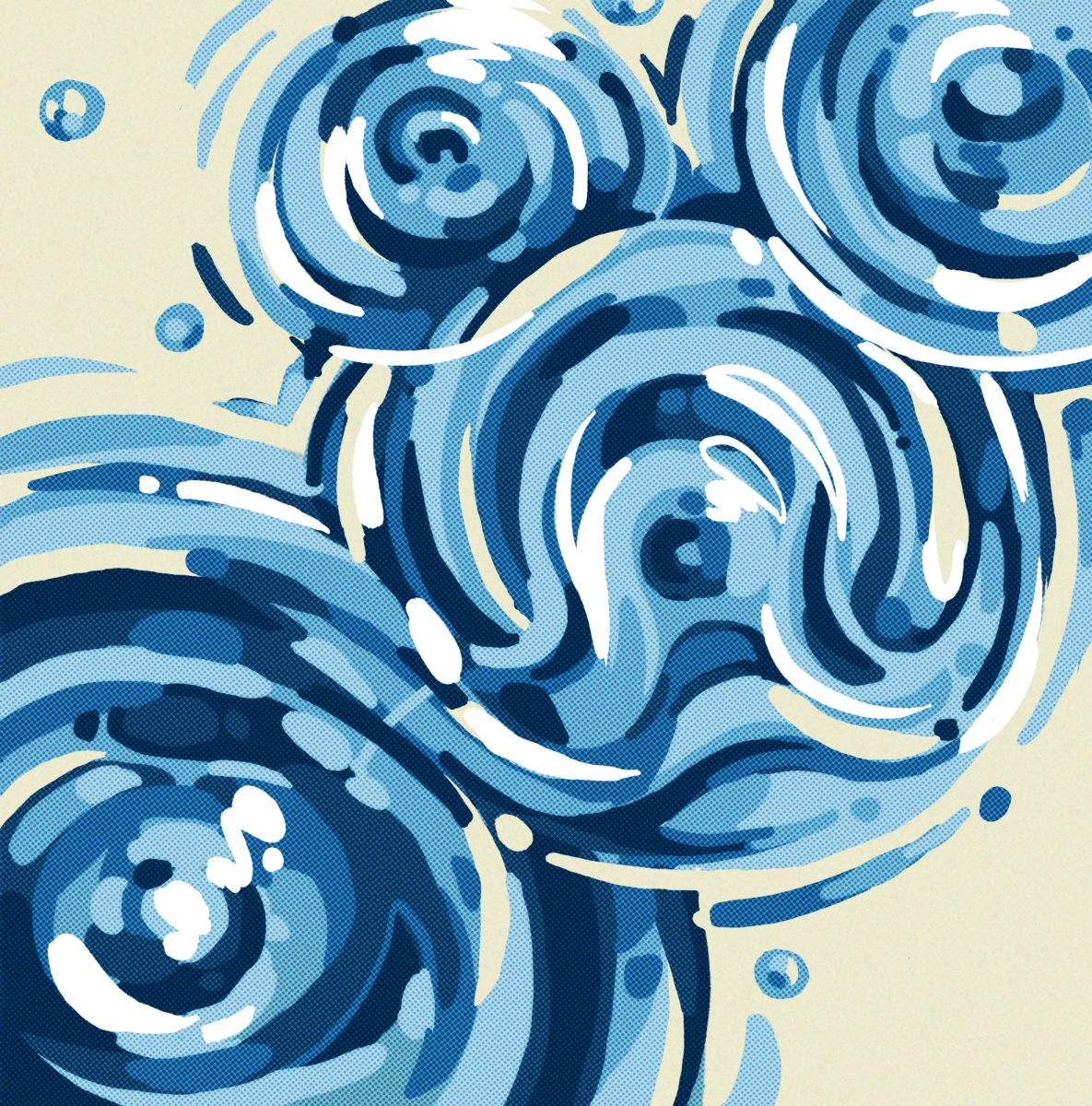In October, The Daily Utah Chronicle printed letters to the editor that allowed readers to witness an educated debate between a U dean and professor interpreting a painting hanging in the new Tanner Humanities Building.
An oil painting on canvas, “The Secret of Inspiration” by local artist Pilar Pobil, is a wondrous and thought-provoking image of people engaging in the pursuit of knowledge that also depicts wildlife and ethereal Muses among the scenic red canyons of southern Utah.
Professor Harris Lenowitz of the department of languages and literature announced in a letter printed Oct. 7 that he interpreted the painting to be prejudiced against Jewish people, although he did concede the artist must have “inadvertently” depicted the rabbi as a stereotype.
Pobil said she used the rabbi in the painting because he represents knowledge and learning, and the ancient book he is writing in represents the valuable heritage of the Jewish people, which has been preserved over the generations. If the rabbi in the painting appears stereotypical, that was not the intent and neither the painting nor the artist should be condemned for it.
“I put the rabbi in the central part as a place of honor,” Pobil said. “Every single one of the people there are people that I respect, because I think they are dedicated to the highest purposes of humanity.”
Lenowitz also argued the faux Hebrew words being written are indicative of a common prejudice found in paintings of the 1300s and 1400s. Therefore, in his opinion the painting is unworthy of display, especially in a building dedicated to the humanities.
Robert Newman, dean of the College of Humanities, defended the painting in his Oct. 9 letter to the editor suggesting the writing is an actual passage from the 1350s Sarajevo Haggadah and not “faux Hebrew.”
Newman was correct when he said the Pobil painting is a tribute to Jewish scholarly traditions and their commitment to preserving its heritage. However, he was incorrect about the Hebrew symbols. Pobil maintains the writing is “faux Hebrew” and the Hebrew symbols don’t represent anything other than to signify the rabbi was writing in Hebrew, but it wasn’t replicating any ancient racial meanings.
It is unfortunate that this discussion degenerated into public bantering, demeaning the precious efforts of an extremely talented painter who masterfully represented individuals from the past, present and future8212;people who are dedicated to preserving the humanities.
Anyone inquiring about the artist’s intent could have read the inscription Pobil wrote to hang along with the painting. In it, she wrote, “People from different corners of the Earth, the ones that care, the ones that think, that remember the past and imagine the future, the ones that learn from History and research the sciences, that create the Music, the Art and Literature that keep the records of this world for future generations, they in the spirit of friendship and understanding, have peacefully gathered among the sandy cliffs…”
These are not the words of a racist, hateful person. This image deserves to be hung in the heart of this new building and celebrated because it’s a perfect representation of important scholarly, humanistic and educational endeavors made by valuable people of the past, present and future.
Beauty is found in the eye of the beholder. If you choose to view the world with critical, negative and skeptical eyes, you will see hate, anger and evil planted in the most innocent of scenes. Hopefully, viewers of the painting will see it as it is8212;a remarkable piece of art and a tribute to diversity.

Alicia Williams










